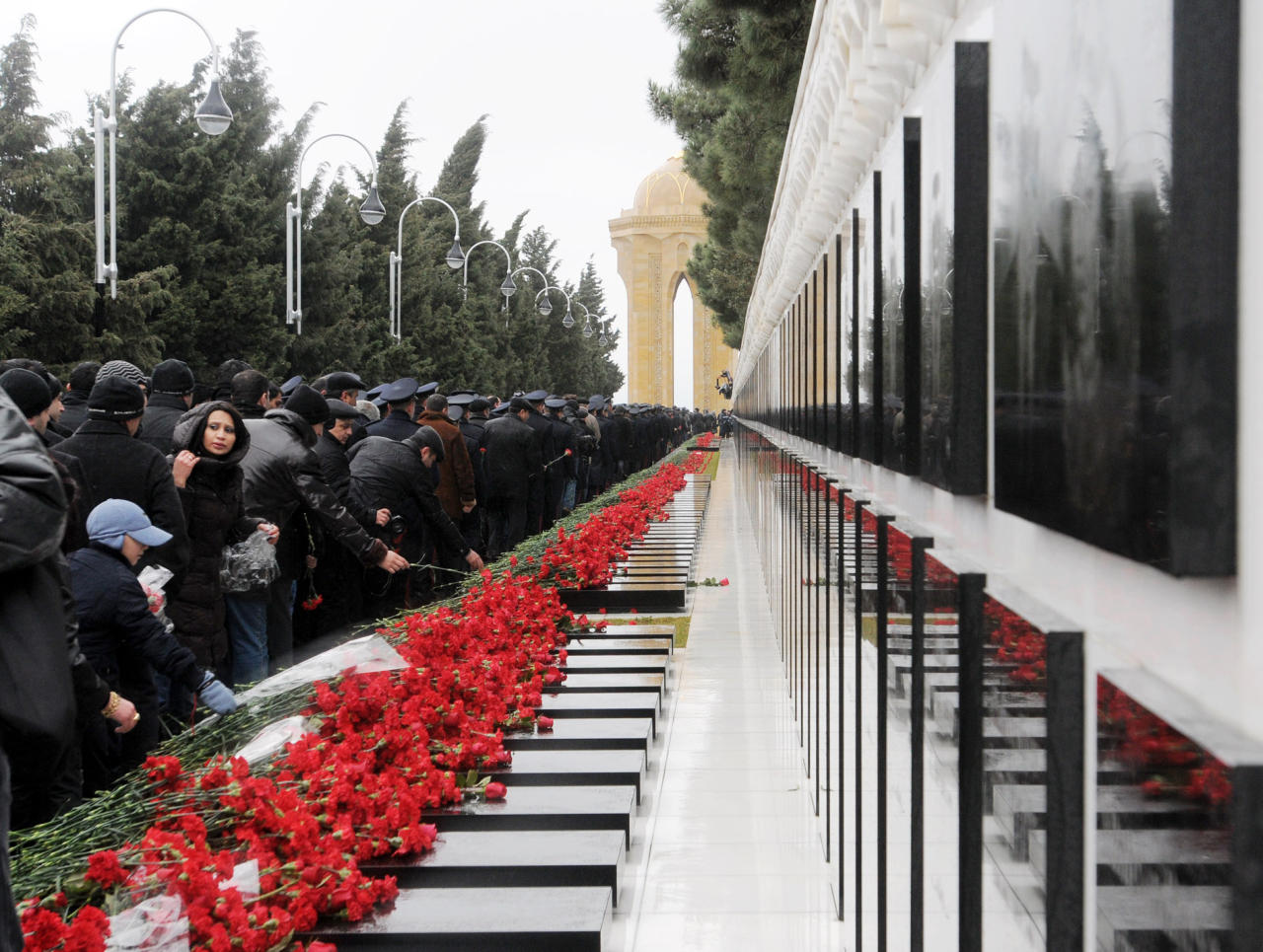Black January: Tragic and heroic pages of history

By Amina Nazarli
As years go by, many memorable events in people's mind turn to history. The bloody tragedy perpetrated against the people of Azerbaijan on January 20, 1990 is forever etched in memories. Though it is painful to return to those days, people every year commemorate innocent victims of the tragedy and pay tribute to all those who died for the their right of national independence.
The monstrous crime was committed twenty seven years ago against the Azerbaijani people, humanism and humanity overall.
History of every nation has both tragic and heroic pages and only in rare cases these two events coincide. January 20 is the very page in the history of Azerbaijan. The people on that day passed the exam and worthily went through this ordeal.
The bloody events full of unbelievably cruel scenes left an indelible mark in the memory of the living witnesses. Despite 27 years pass since this tragic event, the day like the reel of film still scrolls in front of eyes of witnesses: anxious Baku, bullets glittering in the darkness, tanks and hum of armored vehicles, dead bodies scattered through the streets, hospital wards filled with hundreds of wounded.
Everything started when Baku residents came out to protest against the senior management of the policy of the USSR Mikhail Gorbachev, as a result of which Armenian nationalists demanded joining the Nagorno-Karabakh Autonomous region of Azerbaijan to Armenia. But the protests received totally inadequate answer -- the Soviet troops began unimaginable atrocities in Baku.
During an operation which began from the late hours of January 19 into January 20, 26,000 hostile and aggressive-minded Soviet special forces called "Alfa" entered Baku to commit atrocities against the Azerbaijani people. They stormed and murdered hundreds of civilians without declaring a state of emergency.
Around 10pm in the evening deafening silence suddenly covered the city after demolition of the central television station and termination of phone and radio lines by the Soviet army. The people were deprived of the right to access information.
They shot at any moving target, dark alleys and windows of houses. Tanks crushed a car with passengers on.
They fired protesters crushing many of them with tanks, and arrested hundreds more for imprisonment and torture. The invasion was launched at midnight. It was committed with unbelievable brutality. Even children, women and the elderly were targeted.
The reasons of January tragedy go deep into history, beginning from the territorial claims of Armenians against Azerbaijan.
Back in 1987 the Armenian academics and official figures claimed to the Karabakh region of Azerbaijan and conducted propaganda in this direction. Taking advantage of Soviet Union’s last leader, Mikhail Gorbachev’s perestroika policy, Armenians once again resumed their insidious policy towards Azerbaijan.
Then, the Soviet government had an intention to realize the Armenian policy by diplomatic means in 1988, but failed because millions of Azerbaijanis headed to the streets to protest Armenian aggression and separatist forces fueling unrest in the ancient land of Azerbaijan -- the mountainous Karabakh region.
Azerbaijani people launched the square movement to defend their rights and land. Indeed, the Central government sent military forces to suppress the national movement and even crushed the rebellions by force. But that was temporary.
Azerbaijanis were determined to protect their territorial integrity and did not step back, showing their sacrifice and vigor for the national freedom.
The crime that the Soviet army committed on these two days in Baku was a real sabotage and bloody crime against Azerbaijanis, who were protecting their constitutional rights.
This tragic event did not break the spirit of the nation, but marked a turning point in the history of Azerbaijan’s independence from the Soviet Union and revealed the strong determination of the people to build their own sovereign country.
The January 20th tragedy provoked worldwide anger and
indignation of the progressive forces.
A report by Human Rights Watch titled “Black January in Azerbaijan"
states: "Indeed the violence used by the Soviet Army on the night
of January 19-20...constitutes an exercise in collective
punishment... The punishment inflicted on Baku by Soviet soldiers
may have been intended as a warning to nationalists, not only in
Azerbaijan, but in other Republics of the Soviet Union."
The horrible night did not give the chance for many young people to fulfill their purest dreams, including the lovely couple of Ilham and Fariza, who also became the victims of bloody tragedy.
The event separated two loving hearts. Ilham became one of the first victims at that night. Unable to bear the death of her beloved Fariza took her own life drinking acid, the day after Ilham’s funeral.
Now their graves lie side by side near the entry of the Martyrs Avenue -- Ilham and Fariza promised to be together forever and kept their word.
Photographs are mute witnesses of these bloody days. Horrific fragments imprinted in the memory of camera lens, pass historical milestones of people's tragedy and the struggle for freedom. Carefully peering into them, one can also see hope and faith, through the sadness and grief, as well as invincibility, unity and solidarity of the people.
On this day, a minute of silence is observed throughout Azerbaijan. Ships, automobiles and trains provide mourning sounds and lower a little national flags across the country.
Every January 20th is a mourning day in Azerbaijan to commemorate all martyrs, who sacrificed their lives for the bright future of the nation. They live in hearts of Azerbaijanis...
--
Amina Nazarli is AzerNews’ staff journalist, follow her on
Twitter: @amina_nazarli
Follow us on Twitter @AzerNewsAz
Here we are to serve you with news right now. It does not cost much, but worth your attention.
Choose to support open, independent, quality journalism and subscribe on a monthly basis.
By subscribing to our online newspaper, you can have full digital access to all news, analysis, and much more.
You can also follow AzerNEWS on Twitter @AzerNewsAz or Facebook @AzerNewsNewspaper
Thank you!
